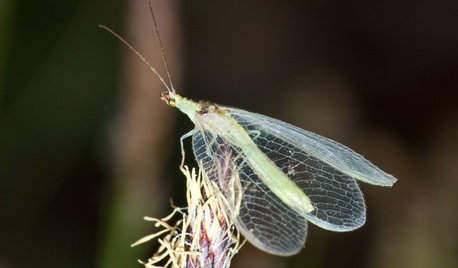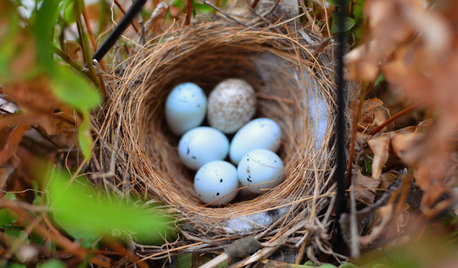Good morning, y'all,
It is that time of year again....the time when folks begin noticing increasing numbers of insects in their gardens and become overly concerned about their presence. There really is no reason to panic as most bugs are not destructive and many are helpful and beneficial in many ways.
Your entire landscape is an ecosystem. In every ecosystem you will have living organisms that are more helpful than others, and there will other living organisms that are more harmful than others. There are very few, though, that are a reason for serious concern. Some insects are both helpful and harmful.
In a healthy ecosystem, every insect you see is part of the food chain and, while some bugs undeniably cause damage to some garden plants, others are helpful in many ways. Your goal as a gardener is to create a healthy, thriving ecosystem where all your plants thrive and where birds, reptiles, insects and arachnids peacefully coexist.
Here's a example of a helpful garden visitor: the spider. Most spiders are helpful because they eat many, many other insects. Yet, I know a lot of people who fly into a tizzy when they see a spider. In a rural area like mine, you can have a million spiders an acre. I appreciate the spiders and need their help to control some of the undesirable insects. Having said that, we exterminate black widows and brown recluses when we find them here.
Many insects are beneficial, including lady bugs, green lacewings, bees, wasps, minute pirate bugs, flies, assasin beetles and ground beetles. Remember that earthworms are very helpful and really help improve your soil. Dragonflies, if you're lucky enough to have them, are incredibly beneficial. There are even beneficial mites that eat red spider mites and other harmful types of mites. In the case of mites, if you use a product to kill the red spider mites, it also will kill all your beneficial mites and then when the red spider mite population rebounds (as it always does), you'll have all bad mites and no good ones and a worse problem with mites than you saw initially.
Caterpillars, in general, can be annoying when they chew on your plant foliage, but most of them will not do enough damage to kill a plant. Oviously cutworms are an exception to that, and so are tomato hornworms, corn earworms and tomato fruitworms. Cabbage loopers and cabbage worms can cause irreversible damage to cole crops if they appear in large enough numbers.
Sometimes the solution to one bug issue is the arrival of another bug. For example, look at the ladybug-aphid connection. Ladybugs arrive in my garden normally 3 to 7 days after aphids arrive. Within a week I have ladybug larvae all over the place and no aphids. Isn't that cool? Parisitic wasps are another helpful insect. Many of them parisitize caterpillars by laying their eggs on them. After the young hatch from the eggs, they feed upon the caterpillars. This is great in the garden in terms of controlling harmful caterpillars, but of course, if you are a butterfly gardener, you wouldn't appreciate the parisitic wasps.
In a healthy ecosystem, you'll have enough of the good bugs to keep the bag bugs under control. Problems arise, though, if you use a broad-spectrum pesticide in your landscape because it will kill off all the good bugs along with the bad ones. Because bad bugs bounce back first, you then end up with a larger population of bad bugs than you started with because you have no good bugs to keep the bad ones under control. To avoid this, you can use biological products that target a specific pest insect...for example, Bt 'kurstaki' for caterpillars or Bt 'San Diego' for Colorado Potato Beetles or iron phosphate baits (Slug-Go, Escar-Go! and other organic snail/slug baits) for snails or slugs or iron phosphate + Spinosad (Slug-Go Plus) for snails and slugs plus pill bugs and sow bugs.
I have a huge garden and landscape and rarely have any given insect damage a plant or plants to the point that I feel any concern about it. I mostly let the good bugs control the bag bugs and I stay out of it and don't interfere in the process. Arriving at this state was not easy. It is hard to sit by patiently and wait for the good bugs to arrive while the bad ones are doing damage, but it pays off as your beneficial insect population increases over the years.
You can attract beneficial insects to your place in many ways. First, do not use broad-spectrum pesticides or they'll avoid your place like the plague. Secondly, plant flowers they're attracted to. Most beneficials are attracted to anything that has tiny flowers...like yarrow or sweet alyssum, and to blooms of many herbs, like catnip, catmint, chamomile, basil, rosemary, lemon balm, etc. Third, leave the bad bugs alone to the extent that you can so they'll have a food supply.
Remember that you have other garden helpers too. Dragonflies and damselflies eat tons of small insects, including mosquitoes. If you have even a tiny water feature in a pot, you'll have dragonflies. It helps if you have something tall and spiky in your water garden, like cattails or pickerel weed because dragonflies like to perch on those while hunting. They even perch on my garden stakes at times.
Birds are great at insect control. I attract wild birds to the garden by feeding them just outside the garden year-round. Once they are used to coming to the garden area to eat, they hang around all day and actively hunt insects.
Frogs, toads and lizards are great garden helpers too, so I keep a shallow pan of water in or near the garden for them and leave dark, shady spots in the corners of the flower border so they have a place to hide.
If you live in an area that doesn't seem to have beneficial insects (common these days because of widespread pesticide use), you can buy and release many kinds, including lady bugs, green lacewings and trichogramma wasps.
I tolerate some 'bad' bugs like blister beetles up to a certain point because they eat grasshopper eggs. Grasshoppers are very destructive and I haven't found a good use for them, except as chicken feed and fishing bait, so I welcome blister beetles unless they run out of grasshoppers to prey upon and start eating plants instead.
Praying mantids are also a good guy/bad guy kind of insect. While they prey upon many pest insects, they also eat beneficial insects and even eat one another. I don't deliberately release them here, but we still have plenty of them around.
When do you worry about an insect? I'd say you worry about one when it is doing large amounts of harm to a plant, but remember that seeing them around doesn't mean they're doing a lot of damage. Often the damage they do is minimal and only cosmetic.
My main form of pest control, other than relying upon beneficial insects, is to handpick pest bugs off plants. Colorado Potato Beetles, for example, are very easy to pick off the plants because they're very slow-moving. If I think an insecticide is needed, I try to choose an organic product specifically aimed at the pest I'm having trouble with.
You also have to ask yourself if there's a reason you're having a specific pest problem. For example, aphids routinely show up in April or May and that is normal. In a healthy garden with healthy plants and a balanced bug population, you'll only see them for a few days and then they are gone. I've never had them do enough damage to kill a plant, but then I am extremely careful to avoid feeding my plants excess nitrogen. Why? Because plants that are overfed nitrogen are incredibly attractive to aphids.
The next time you see an insect in your garden, remember that it is just part of the food chain and you need all the bugs...good and bad....in order to have a healthy garden ecosystem. After all, if you wipe out all the bad bugs, there's nothing left to feed the good ones. Insects also perform lots of helpful tasks. Many kinds of flying insects like bees, sweat bees, hover flies, wasps, etc. are pollinators that some plants rely upon for pollination. Others, like harvester ants, haul off and dispose of the carcasses of dead insects.
And, in case you're wondering which insects do cause me concern, it is a very short list: cutworms, tomato hornworms after about July (prior to that, the few I see don't especially do much damage earlier in the season), stinkbugs, blister beetles IF they are eating plants, cucumber beetles, tomato fruitworm/corn earworm, European corn borers, squash vine borers, spider mites in excessive numbers that beneficial mites cannot control, leafhoppers (because they vector diseases), and definitely grasshoppers/locusts.
For each of the above, I have specific things I do that targets them and them alone so I don't hurt any other members of the ecosystem.
So, the next time you see an insect, don't panic. It is a natural part of your garden ecosystem and it has its own niche to fill. If a pest is causing extreme damage and no beneficial insects or animals or birds are coming to the rescue, then of course you have to do something to intervene. Most of the time, though, if you don't do anything, the world doesn't end and the garden does just fine.
Dawn














owiebrain
mrsfrodo
Related Discussions
RRD Panic!
Q
Favorite reason to garden?
Q
48 Reasons Not To Mow 37 Ways To Help Trees
Q
Organic Insect Control in the Home Landscape
Q
Okiedawn OK Zone 7Original Author
boomer_sooner
kaitsmama
devilwoman
jleroi
kaitsmama
tigerdawn
gldno1
mulberryknob
Okiedawn OK Zone 7Original Author
susanlynne48